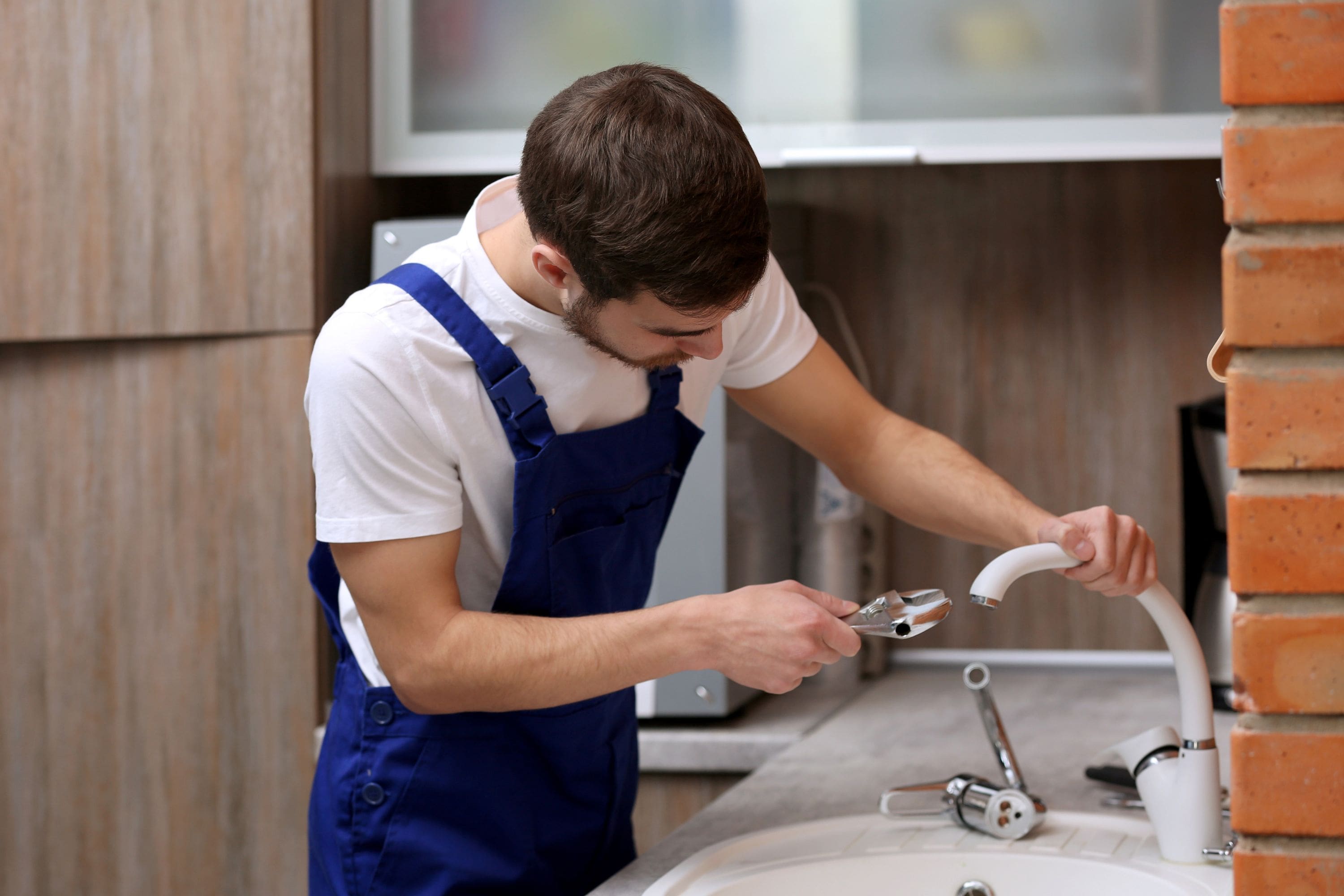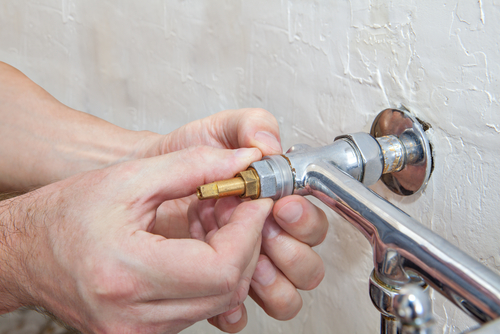Learning the Relevance of Correcting a Dripping Faucet
Learning the Relevance of Correcting a Dripping Faucet
Blog Article
Just about everyone has their private conception about Should I Repair or Replace a Leaky Faucet?.

Dripping faucets might appear like a small aggravation, yet their effect goes beyond just the annoyance of the audio. From wasting water to incurring unnecessary monetary costs and wellness risks, neglecting a trickling tap can result in various effects. In this post, we'll delve into why it's crucial to address this usual household problem promptly and efficiently.
Wastefulness of Water
Environmental Effect
Trickling faucets add substantially to water wastage. According to the Environmental Protection Agency (EPA), a solitary tap trickling at one drip per secondly can squander more than 3,000 gallons of water per year. This not just stress water resources but likewise influences ecosystems and wild animals based on them.
Financial Costs
Raised Water Bills
Past the ecological influence, trickling taps can pump up water expenses considerably. The accumulated wastage over time translates right into greater utility costs, which can have been avoided with prompt repairs.
Potential Residential Property Damages
Additionally, extended dripping can result in damage to fixtures and surface areas surrounding the tap. Water build-up can create discoloration, rust, and even architectural issues if left neglected, leading to extra repair work costs.
Wellness Worries
Mold and Mildew Development
The continuous presence of dampness from a leaking tap produces an ideal environment for mold and mildew growth. These fungis not just endanger interior air top quality yet likewise present health and wellness threats, especially for people with respiratory conditions or allergies.
Waterborne Conditions
Stationary water in dripping faucets can come to be a breeding ground for bacteria and various other virus, boosting the risk of waterborne illness. Contaminants such as Legionella microorganisms thrive in stationary water, potentially causing serious health problems when ingested or inhaled.
Do it yourself vs. Professional Repair service
Advantages and disadvantages of Do It Yourself Repair Work
While some might try to fix a leaking tap themselves, do it yourself repairs come with their own collection of obstacles. Without correct knowledge and tools, DIY efforts can aggravate the concern or lead to incomplete repair work, prolonging the problem.
Benefits of Employing an Expert Plumber
Employing an expert plumber makes certain that the underlying source of the trickling faucet is dealt with efficiently. Plumbings possess the knowledge and equipment to detect and fix faucet issues successfully, conserving time and reducing the threat of additional damage.
Step-by-Step Overview to Dealing With a Dripping Faucet
Tools Needed
Before trying to repair a trickling faucet, collect the required devices, including a flexible wrench, screwdrivers, replacement components (such as washers or cartridges), and plumber's tape.
Typical Faucet Issues and Their Solutions
Determine the sort of tap and the specific issue causing the drip. Common issues consist of damaged washers, corroded shutoff seats, or malfunctioning O-rings. Refer to manufacturer guidelines or on the internet tutorials for step-by-step support on repair work.
Safety nets
Routine Upkeep Tips
To avoid dripping faucets, do regular maintenance such as cleansing aerators, examining for leakages, and replacing worn-out components quickly. Furthermore, consider setting up water-saving gadgets or updating to more reliable fixtures.
Value of Prompt Services
Dealing with leaking taps as quickly as they're seen prevents further water wastage and prospective damage, eventually saving both water and cash in the future.
Influence On Residential Property Worth
Understanding of Well-Maintained Residential Property
Keeping a property in good condition, consisting of resolving upkeep concerns like dripping faucets, boosts its perceived value and value amongst potential purchasers or lessees.
Influence on Resale Value
Properties with well-kept plumbing components, consisting of taps, command higher resale values in the realty market. Addressing leaking taps can add to a favorable impact throughout residential or commercial property assessments and arrangements.
Ecological Responsibility
Individual Contribution to Conservation
Taking responsibility for repairing dripping faucets aligns with broader initiatives towards water preservation and environmental sustainability. Every individual's actions jointly make a substantial influence on protecting precious resources.
Lasting Living Practices
By focusing on prompt repairs and taking on water-saving routines, individuals contribute to lasting living techniques that profit both existing and future generations.
Conclusion
Resolving a trickling tap exceeds mere ease; it's an essential step toward conserving water, reducing economic expenses, and protecting health and building. Whether with DIY fixings or expert aid, acting to fix leaking taps is a little yet impactful means to promote accountable stewardship of sources and contribute to a much healthier, more sustainable future.
How to Fix a Leaky Faucet: Step-by-Step Repair Guide
A leaky faucet may seem like a simple annoyance, but if it's not fixed promptly, that leak could cost hundreds to potentially thousands. From water damage to mold, mildew, and high water bills, even a tiny leak can be catastrophic if left unattended. Damage like this can even affect the overall value of your home, so it's important to take the right approach for leaky faucet repair. You may need the help of a plumber in some cases, but we've got a few tips you can try on how to fix a leaky faucet before calling the pros.
Four Faucet Types
When you're learning how to fix a leaky faucet, the first step is knowing what kind of faucet you're working with! There are four common types.
Cartridge Faucets
Cartridge faucets come in one- or two-handled varieties. In one-handled cartridge faucets, hot and cold water combines in a single cartridge. In the two-handled versions, hot and cold water are controlled separately and mixed in the faucet.
Ball Faucets
Ball faucets have a single lever you push up and down to adjust the pressure and rotate to change the temperature. A slotted metal ball controls the amount of water allowed into the spout.
Compression Washer Faucets
They're the oldest type of faucet, but they're still used in many homes — especially older ones. Compression faucets have two separate handles that, when turned, raise or lower the washer that seals a water valve. This valve stops water from flowing through the faucet when it is turned off.
Disc Faucets
Disc faucets rarely need to be repaired due to their maintenance-free design. The water flow is controlled by two discs — the upper one raises and lowers against a fixed lower disc, creating a watertight seal. If your disc faucet starts leaking, you may need to replace the seals or clean residue buildup from the inlets.
Fixing a Leaky Faucet
Step 1: Turn Off the Water
Whether you're learning how to fix a leaky bathtub faucet or how to fix a leaky kitchen faucet, always turn off the water supply to your working area when you're fixing a leak. The last thing you want is a flood added to your list of things to fix.
Look for the shutoff valves below your sink or around the tub and turn them clockwise to stop the water flow. If your faucet doesn't have shutoff valves, you may need to turn off the water for the whole house. Check to make sure it's off by turning the faucet on. If nothing comes out, you're ready to start the repair.
Step 2: Take Apart the Faucet
How you disassemble your faucet depends on the type of fixture you have. You can use a flathead screwdriver to remove the caps on top of the handle or handles for cartridge and compression faucets. Inside, you should see handle screws. Unscrew these with a screwdriver to remove the handle.
Disc- and ball-style faucets will typically have an inlet screw near the handle, and removing that will reveal the interior of the faucet.
Detach the Valve Stem
For cartridge- and compression-style faucets, you'll see the inner valve stem or cartridge once you remove the faucet handles. If you have a compression faucet, unscrew the brass valve stem. If you have a cartridge faucet, pull out the cartridge. If your cartridge has been in place for a while, it may require some tools or extra force to remove it due to mineral deposits.
Examine and Replace Parts
Once you've removed the parts, check them out to confirm what needs to be replaced. You may see corroded rubber washers, O-rings, stems, or cartridges. On a ball-style faucet, check the seats and springs for damage.
If you need to repair a leaky disc faucet, check the inlet and seals on the lower disc.
Once you determine what parts must be replaced, visit your local hardware store. Bring the damaged parts with you to ensure you can purchase the correct components to replace them.
Clean Valves and Faucet Cavity
If you've removed a stem or cartridge, you may notice mineral buildup in the faucet's threads. Use white vinegar to clean the valve seat by soaking it for a few minutes, then scrub it away with a soft toothbrush and rinse with warm water. You can also clean the interior of the faucet in the same way.
Reassemble the Faucet
Once your faucet is cleaned and the required parts have been replaced, it's time to reassemble it. Put the pieces back together and slowly turn the water supply back on. Doing this slowly is crucial because too much initial water pressure can damage the new hardware you've just installed.
https://homewarranty.firstam.com/blog/how-to-fix-leaky-faucet

As a fervent reader on 4 Common Reasons for a Leaky Faucet, I imagined sharing that piece of content was necessary. Don't hesitate to set aside a second to share this blog posting if you enjoyed it. I appreciate reading our article about Should I Repair or Replace a Leaky Faucet?.
Report this page